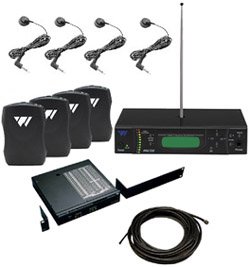

Friends connect to the app – then the person who has hearing loss will see live transcriptions of the group conversation. Lip reading can be more difficult in a group of people and this is one of the main reasons AVA was created.Words spoken appear on the phone of the person who has the app. This is a real-time transcription of speech into text.
#Assistive listening devices alds android
CaptionCall Mobile is available for both Apple and Android devices. If you miss calls, CaptionCall saves a voice message with captioning. Advanced technology and live captioning agents deliver fast and accurate captions of what a caller is saying. It is provided under the Americans with Disabilities Act.
#Assistive listening devices alds Bluetooth
Combine this with the sound being streamed via Bluetooth to both ears and even patients with the poorest WR will do better. We know how much easier it is for our patients to “hear” when they can see the speakers’ face. And an adhesive magnet just does not cry out “high tech.” But still, there are plenty of situations where the t-coil can be useful in looped public spaces.Īpple’s Facetime, ubiquitous as it is, is an assistive listening device you may not have thought of. The phone application may be somewhat less urgent with the decline of landline phones, the advent of Bluetooth, and the inconvenience of finding a cell phone that is compatible.

Other complementary assistive devices, such as the Neosensory Buzz, can also provide additional sound awareness and speech discrimination improvements for individuals with severe-to-profound hearing losses.Įven as states like New York have passed legislation to improve accessibility to t-coils, recommendation of that tried-and-true technology seems to be waning in some quarters. These remote mics do pretty much the same job at much lower cost.

It used to be a heavy lift to convince our patients to invest in a $2,000 FM system when they had just paid several thousand dollars for their hearing aids. To improve their performance in noise they may well require technologies like streaming remote microphones to improve signal-to-noise ratio (ain’t Bluetooth grand!). Patients with particularly poor understanding of speech in noisy environments are likely to receive little or no benefit from those multi-channel automatic and adaptive directional microphones we are so proud of. We know that hearing aids can do only so much for some of these patients. This is particularly true for patients with more severe hearing loss, significant signal to noise ratio loss (as quantified by QuickSIN) and poor word recognition ability. We should be routinely talking to our patients about these extremely helpful tools.ĪLDs enhance the effectiveness of hearing aids and help fill some of the gaps in the utility of even the most technologically advanced devices. I recently blew the dust off an old copy and gave it to my mother-in-law who had been experiencing issues with one of her daughters’ unrealistic expectations.Īnd then there are assistive listening devices. I used to give out a document I called The Rules (for family and friends of hearing impaired people) that noted that hearing aids do not restore “normal” hearing and listed a few simple steps they could employ to make everyone’s lives a little more pleasant.

But a simple list of suggested behavior adjustments would be extremely helpful to most of our patients. I’m not saying we should be teaching cued speech. It doesn’t pay, it’s too time-consuming and convincing patients it’s time well-spent isn’t easy. Good old-fashioned aural rehab (or as my mentor Henry Tobin used to insist on calling it – audiologic habilitation) gets way too short shrift these days. In that we do our patients a disservice because there are so many other useful implements at our disposal. All too often it is the only tool offered to our patients. Or maybe not? Definitely not! Hearing aids are a tool. Slap on a pair and the world will be your oyster. All a person has to do to hear better is to wear hearing aids.


 0 kommentar(er)
0 kommentar(er)
